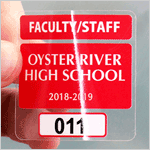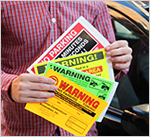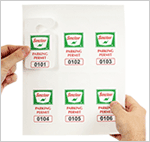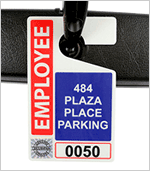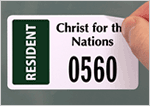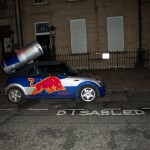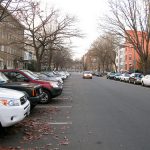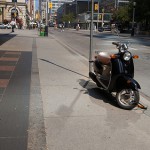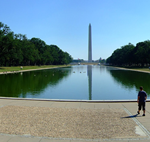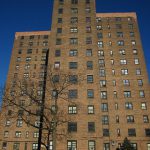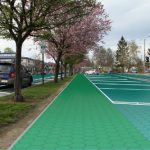DC suburb links future to expansion of Metro line
“You couldn’t buy a Band-Aid in Tysons. Or a pencil,” says Jerry Gordon, head of Fairfax County Economic Development Authority, about the recent past of Tysons, a 2,100-acre suburb north of Washington, DC.
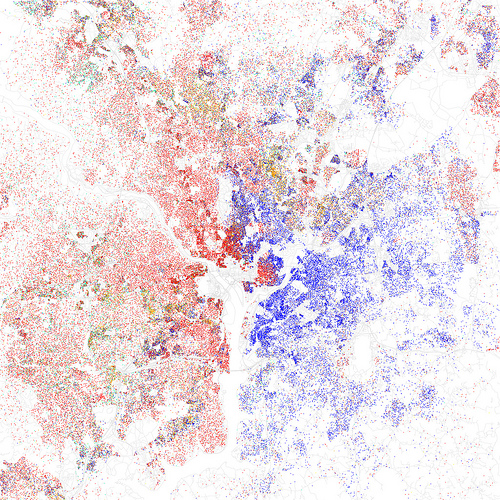
Washington, D.C., mapped by race. Red is White, blue is Black, green is Asian, orange is Hispanic, yellow is other, and each dot is 25 residents. Data from 2010 census. From Flickr’s Eric Fischer.
Located in wealthy Fairfax County, Tysons can brag about the half-dozen Fortune 500 companies that call it home. Indeed, it’s one of the largest employment centers in the country, boasting posh hotels, restaurants, and department stores. But Tysons has few churches, parks, or grocery stores, the sort of place-making, Main-Street development that make a town feel like home.
Until recently, such features were unnecessary to Tysons’ growth. In the 1990s, it “was the go-to location,” says Christopher Leinberger, who lectures on urban development at the Brookings Institution and George Washington University. It was seen as more desirable than downtown Washington and nearby Arlington, but as Tysons began sporting more and more traffic-filled roads, its appeal lessened. Today DC and Arlington command “the highest office rents, twice as much as Tysons,” Leinberger notes. “That’s where the market wants to be—in these walkable, urban locations.”
Civic leaders for Tysons are aware of the turn in the marketplace and have pinned the town’s hopes on the Silver Line, an extension of the Metro, DC’s public transit system. The expansion will feature four stations that are planned to open in Tysons this summer, and already the surrounding areas are showing signs of the town’s commitment to a more transit-oriented, walkable urban future. A residential development slated to open near the Spring Hill station includes the construction of new streets meant to improve Tysons’ poor road network—source of its traffic ills—while a 470-foot office tower by Capital One is planned near the McLean stop.
That development also includes the partial construction of a street grid because, unlike many suburbs where revitalization means reimagining a dead or dying mall, Tysons doesn’t have “obvious land on which to create an urban center,” says Alan Ehrenhalt, author of The Great Inversion, which addressed the demographic and development reversal of America’s cities and suburbs. Tysons instead has to carve out a new street grid for which developers are footing much of the bill. Fairfax County will assess later where gaps in the grid exist.
Until then, Tysons continues to follow its plan, adopted in 2010, to increase its population of 19,000 to 100,000 and its daytime workers to twice that figure by 2050. Currently, a little more than 40,000 workers travel there from Loudoun County and points west; the Silver Line expansion won’t benefit them, because it caters to riders from DC and Arlington to the east, commuters Michael Caplin hopes to recruit to Tysons.
“There are lots of good quality jobs out here to be had,” says the director of Tysons Partnership, a nonprofit that promotes development in the region.
Related Posts
Category: Municipal, Traffic management


